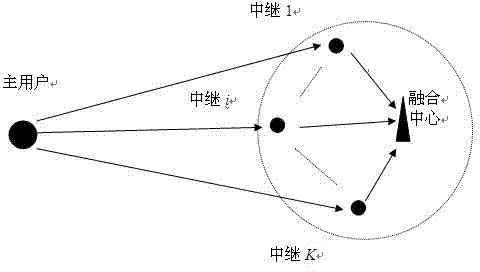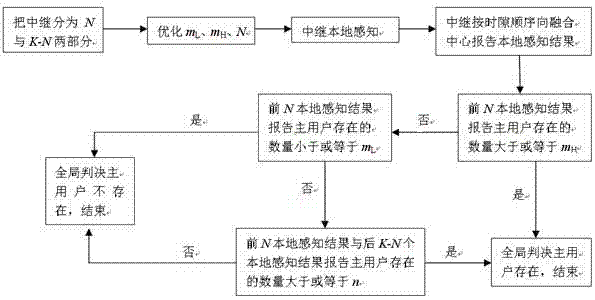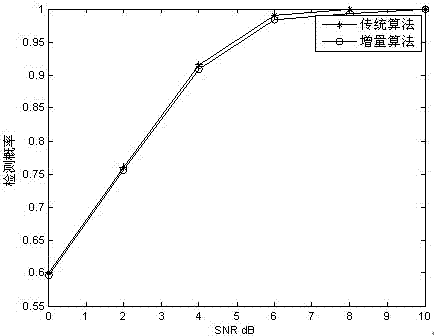Incremental cooperative sensing method on basis of n-out-of-K fusion rule
A cooperative sensing and incremental technology, applied in transmission monitoring, electrical components, transmission systems, etc., can solve the problem of insufficient sensing ability of a single node
- Summary
- Abstract
- Description
- Claims
- Application Information
AI Technical Summary
Problems solved by technology
Method used
Image
Examples
Embodiment Construction
[0032] The present invention will be further described below in conjunction with the accompanying drawings and examples.
[0033] figure 1 Shown is a cognitive radio spectrum cooperative sensing system based on decision fusion. The system has K relays. In order to solve the problem of large time slot overhead in traditional cooperative sensing algorithms, the cooperative relays are divided into the first N and the last K-N. If the first part detects that there are too many or too few relays of the main user, the sensing ends, otherwise, the incremental cooperative sensing is performed in the second part, and incremental cooperative sensing and non-incremental cooperative sensing are used depending on the specific situation. Perception, the specific steps are as follows and see figure 2 :
[0034] (1) The first N time slots:
[0035] (1.1) The first N relays sense locally and send the sensing results to the fusion center, and it is assumed that x relays detect the primary u...
PUM
 Login to View More
Login to View More Abstract
Description
Claims
Application Information
 Login to View More
Login to View More - R&D
- Intellectual Property
- Life Sciences
- Materials
- Tech Scout
- Unparalleled Data Quality
- Higher Quality Content
- 60% Fewer Hallucinations
Browse by: Latest US Patents, China's latest patents, Technical Efficacy Thesaurus, Application Domain, Technology Topic, Popular Technical Reports.
© 2025 PatSnap. All rights reserved.Legal|Privacy policy|Modern Slavery Act Transparency Statement|Sitemap|About US| Contact US: help@patsnap.com



